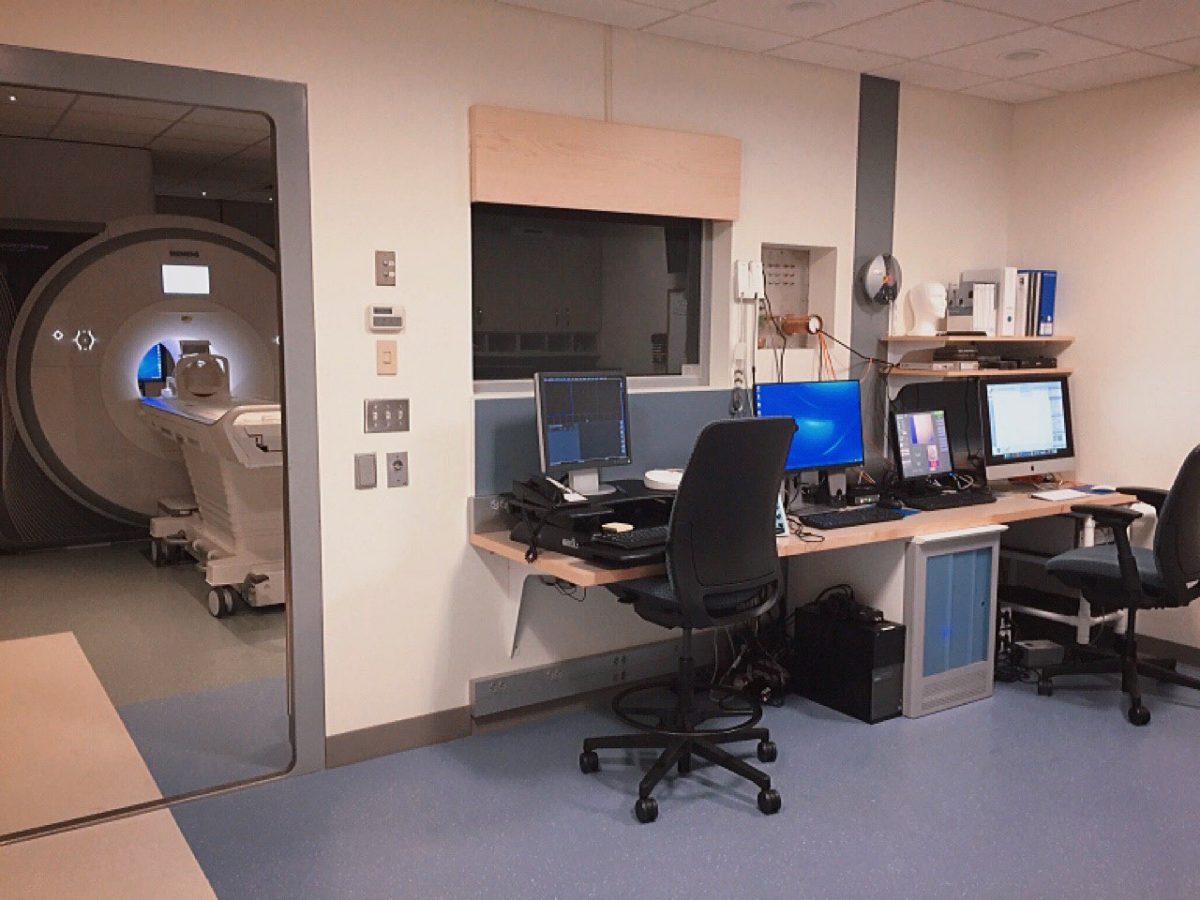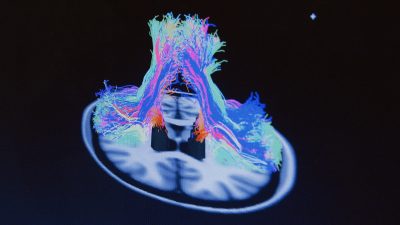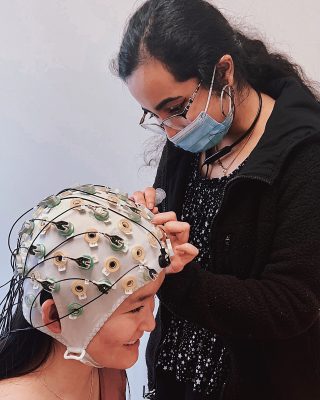.
With neuroimaging, we can see how reading instruction changes the brain.
fMRI
In the spring of 2022, campers will have one fMRI (functional magnetic resonance imaging) done.
What does an MRI scanner do?
-
The MRI scanner is a big, strong magnet that produces very clear pictures of the brain. The pictures show where the blood flow goes in different parts of the brain.
What does the process feel like?
-
Participants lay on the table that slides part way into the scanner
-
The scanner makes knocking and beeping sounds, and children wear headphones
-
Children will have pillows and blankets for comfort
-
Check out the video on the BIRC center web page that shows the whole process!
Is an fMRI safe?
-
fMRI is very safe for children of any age, and has been done with children under 2 years old
.

EEG
About once a week during the program, campers will do some reading tasks while having an EEG done.
What is an Electroencephalogram (EEG)?
-
It measures natural electrical activities in the brain through a cap
How is it done?
-
A cap is placed on the head that send signals to a computer
-
Different patterns in brain waves can show different levels of activity
Is it safe?
-
Yes! It is safe and comfortable.
-
There are no side effects or risks
A depiction of brain function and structure.
.


